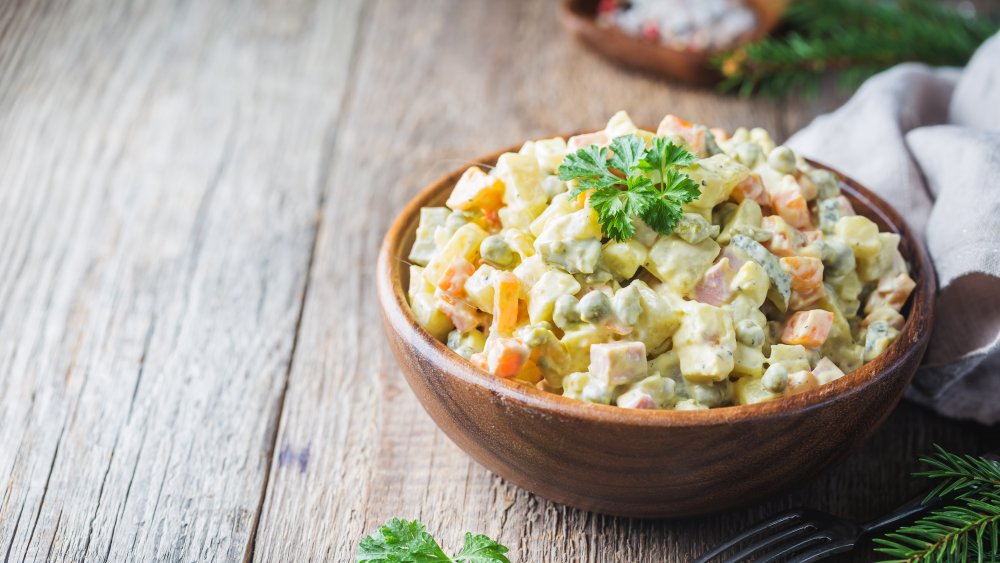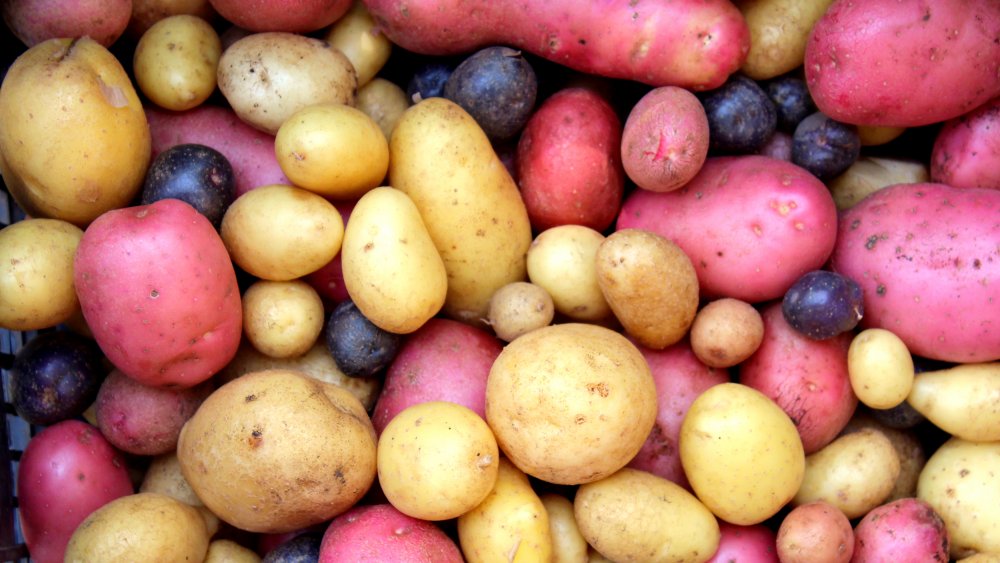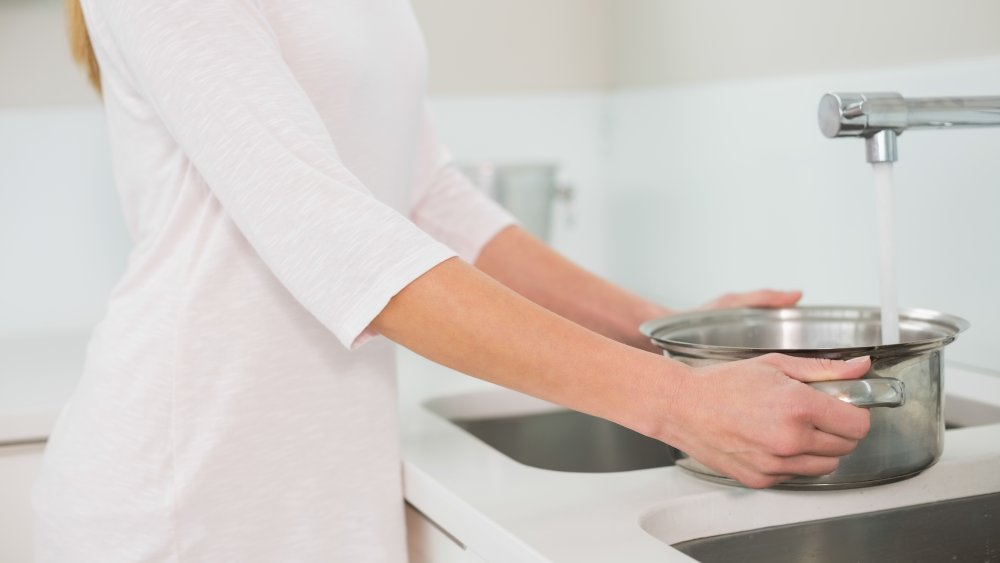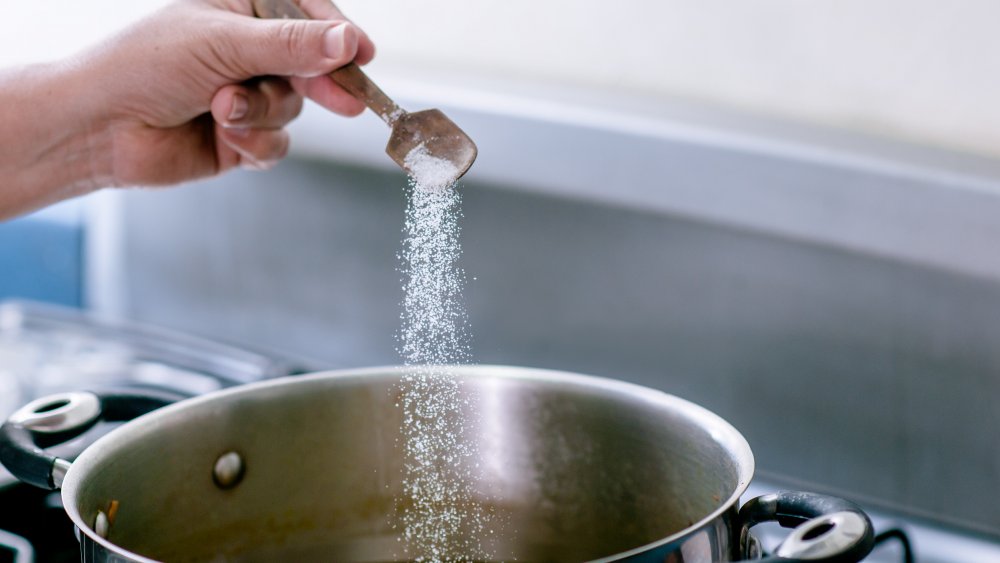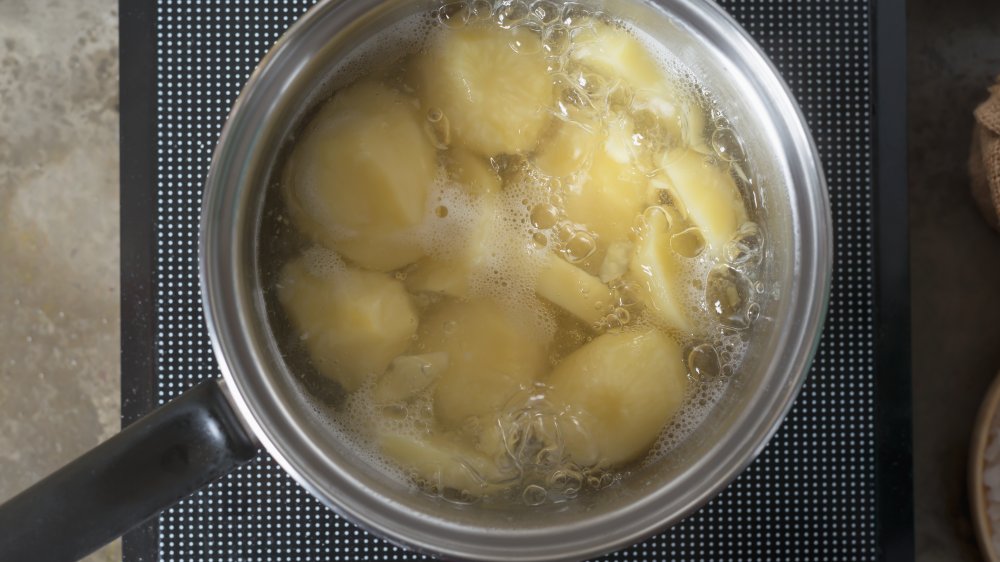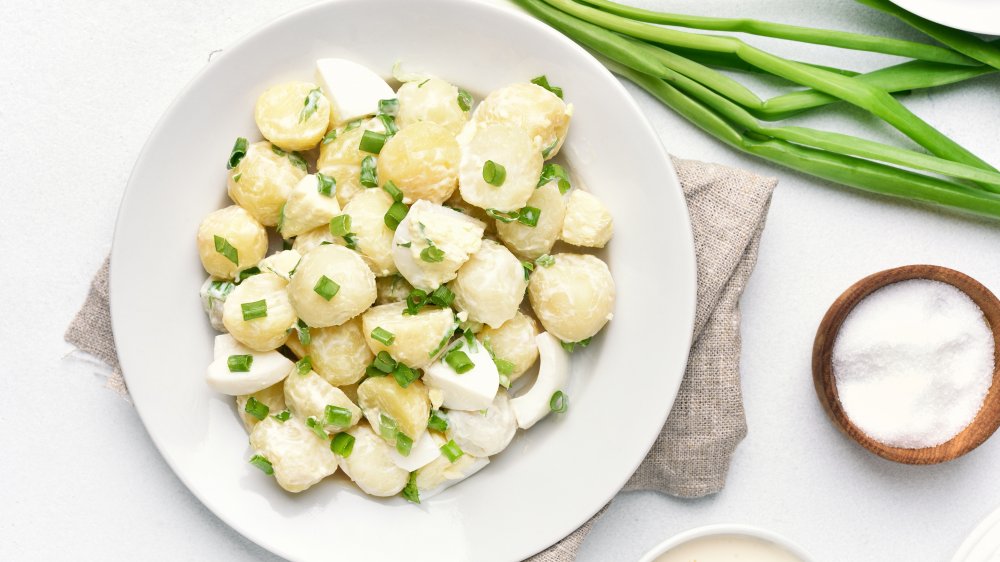You've Been Making Potato Salad The Wrong Way
Potato salad is a staple of summer cooking. No self-respecting backyard barbecue is complete without it, and it's a reliable side dish that will please almost anyone. If the burgers are accidentally scorched by your buddy who's too busy playing cornhole to monitor the grill, or if that pork butt is taking way longer to cook than your mom expected, you can always turn to potato salad for sustenance and comfort. This inexpensive side dish can easily feed a crowd, and you can make it ahead of time so it's ready when you are.
However, before you attempt to win the day by bringing potato salad to the party, you may want to double check your technique. There are many opportunities for mistakes in the potato salad-making process. If you've ever ended up with watery, underseasoned, or boring potato salad with potatoes that somehow manage to be both mushy and undercooked at the same time, you've been making your potato salad the wrong way. Here are some tips and techniques that will get you on the path to potato salad perfection.
Choose the right potato for your salad
The right potato, or the wrong one, can make all the difference in your potato salad. Opinions vary, but according to The Kitchn, the trick is to avoid anything too starchy, like a russet potato. Since potatoes for potato salad are usually boiled first, you need an option that will retain its shape during cooking. Russets tend to fall apart in the cooking process. A thin-skinned, waxy potato will work best. So, look for small red potatoes, new potatoes, or fingerlings as they all have a low starch content and will hold their shape when boiled. A bonus of using these varieties is that their skins are so thin, you can skip peeling them — just make sure to scrub them well before cooking.
White potatoes and Yukon Golds have more starch than their waxy counterparts but will still hold their shape when cooked. Choose these if you can't find red, new, or fingerling potatoes and your potato salad will still be a success. It's up to you if you want to cut your potatoes before cooking them or leave them whole. But, Tablespoon points out your potatoes will cook more quickly if you cut them first. We're all about efficiency, especially when the reward is a big bowl of potato salad.
Start your potatoes in cold water
Once you've selected your potato salad-worthy potatoes, the next step is to cook them. If you're used to tossing your potatoes into a pot of boiling water, think again. Your best bet is to start them in cold water, bring the pot to a boil, then gently simmer the potatoes until they are cooked through. Cooks Country tested this method against adding potatoes straight to boiling water. Not only did tasters prefer the uniformly creamy texture of the potatoes started in cold water, but they cooked in less time.
Tasting Table says adding potatoes to boiling water causes the outsides of the potatoes to cook faster than the insides, resulting in unevenly cooked potatoes. We're guessing a mix of mushy and nearly-raw potatoes is not what you're going for. So, be sure to place them in a pot and cover them with an inch or two of cold water to start. There's one more thing you want to do before cooking your potatoes, though, and that's season them.
Salt your cooking water for potato salad
To get the most bang for your seasoning buck, take advantage of the cooking water. Bon Appetit encourages you to think of potatoes like pasta and cook them in heavily salted water. Like pasta, potatoes will absorb salt (aka flavor) during the cooking process and will emerge perfectly seasoned throughout. Potatoes are a dense food and, in order for them to pick up adequate seasoning in the 15 to 20 minutes it will take to cook them, Bon Appetit recommends adding 1 cup of salt to 3 quarts of cold water. Yes, it sounds like a lot but, remember, you want the flavor to be able to stand up to the fattiness of your potato salad dressing, whether it's mayo, sour cream, or olive oil. Plus, much of the salty water is going to go right down the drain when the potatoes are done cooking, and you want to make sure the spuds left behind are properly seasoned.
Know when your potatoes are done and when to dress them
The amount of time your potatoes need to cook will depend on their size, and if you haven't been checking them properly for doneness, the texture could be all wrong. Once your potatoes have been simmering for 10 minutes or so, start checking their doneness. Cooks Country recommends inserting a paring knife into a potato and lifting it out of the water. They say if the potato clings to the knife "for even a second", put it back in the water and continue cooking. The potatoes are done when you can raise one out of the water, and have it slide off the knife immediately. At that point, use a strainer or colander to drain the potatoes and the Idaho Potato Commission suggests putting them back in the warm pot on the warm stove to allow any remaining moisture to evaporate. This will prevent a major party faux pas – watery potato salad.
Next, it's time to introduce your potatoes to your dressing of choice. BBC Good Food says if you're planning on a warm potato salad with a vinaigrette dressing, toss the potatoes in the dressing while they're still warm to allow for better absorption. If you're making a chilled, creamy potato salad, let the potatoes cool before adding the dressing. The Kitchn explains hot potatoes can cause creamy, mayonnaise-based dressings to melt and become oily. And remember, a good dressing is nothing without add-ins.
Potato salad is all about the add-ins
Here's where things get personal. Author and culinary historian Michael Twitty writes that your preferred version of potato salad may have been influenced by a number of things, including region, economic class, ethnic origin, family preferences and history (via NBC). Potato salad add-ins can be as conventional as hard boiled eggs and bell pepper and as unconventional as pickled herring and beets. So while the "right" add-in for your potato salad is completely subjective, there are plenty of suggestions. Better Homes and Gardens recommends chopped celery, fresh herbs, and red or green onion to pair with a creamy dressing. A warm potato salad, like this German-style version from Delish, relies on crispy bacon and a dressing made from the bacon fat, apple cider vinegar, mustard, sugar, and red onion. Whatever your taste, take advantage of the blank canvas that is potato salad, and go all in with the add-ins.
Handle your potato salad properly
As you bask in the glow of your perfectly prepared potato salad, be aware of that dark cloud looming on the horizon: spoilage. If you're bringing your potato salad to an outdoor event, the Idaho Potato Commission recommends using commercial mayonnaise for creamy salads instead of homemade mayo, since it contains pasteurized eggs and enough acid and salt to help keep it safe. They remind us to keep hot food hot and cold food cold and suggest chilling your potato salad for four hours before the event and transporting it using a pre-chilled cooler. Then, keep your potato salad on ice and out of direct sunlight. Cook's Country says no matter what kind of dressing you use on your potato salad, don't leave it out for more than two hours, or more than one hour if the temperature is over 90 degrees. Sounds like simple enough advice to allow for optimum enjoyment of your well-earned, well-crafted potato salad.
